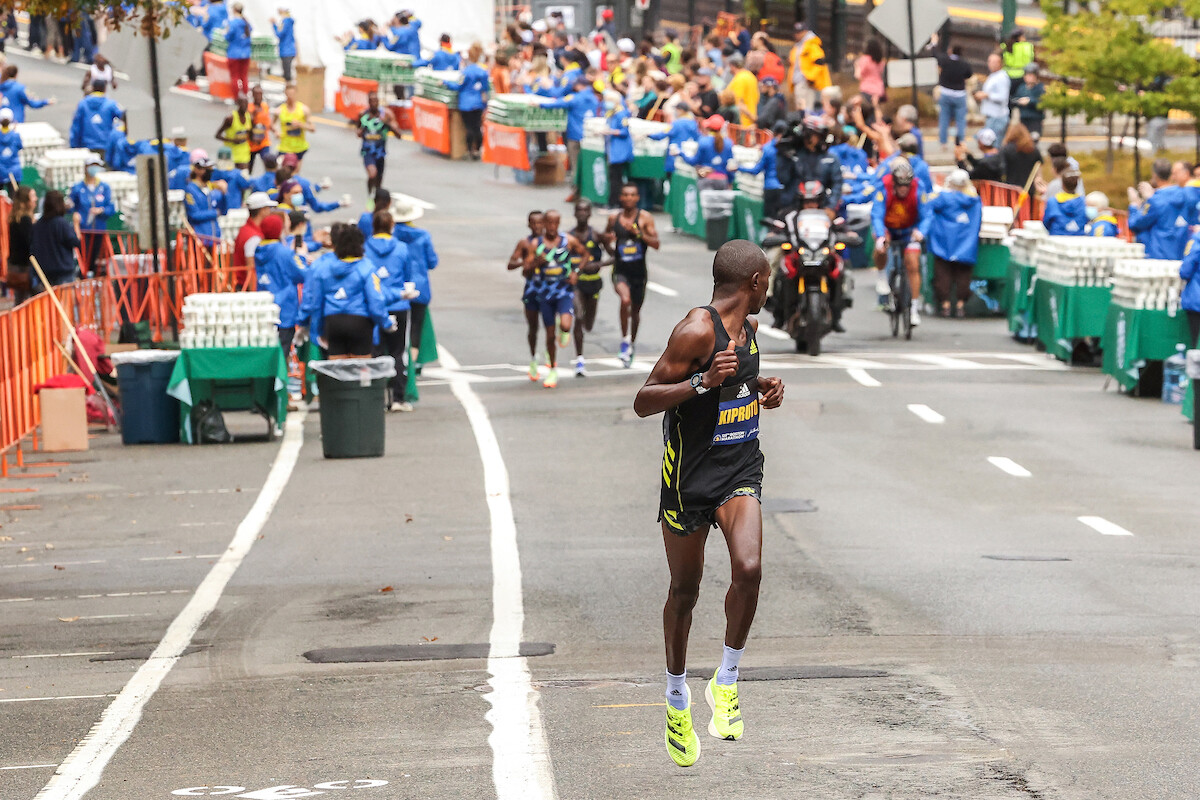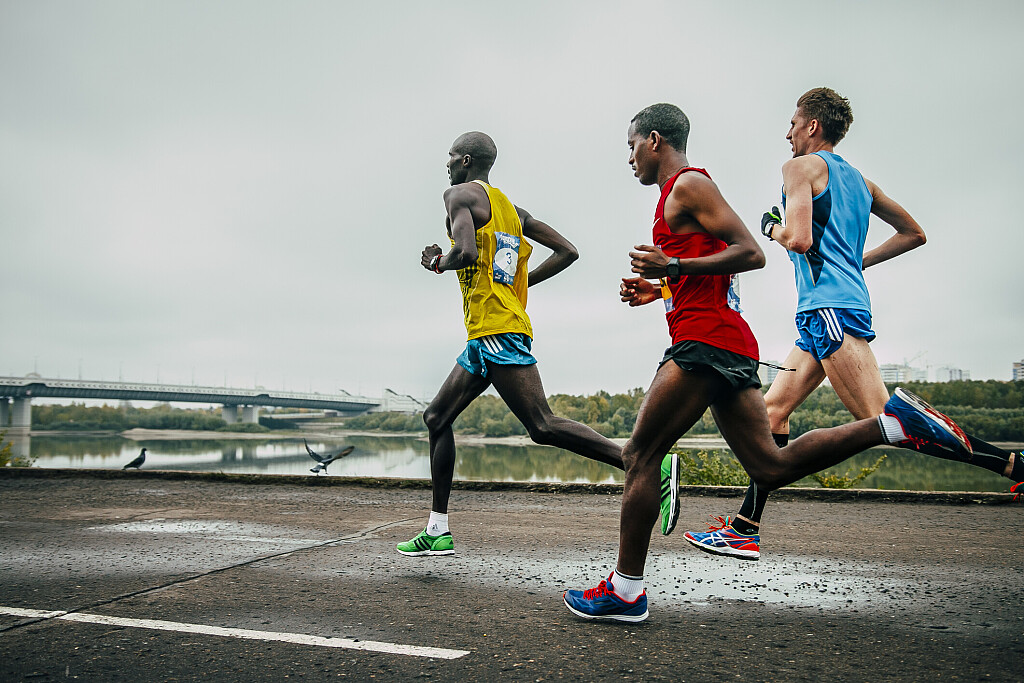Running News Daily
Running News Daily is edited by Bob Anderson. Send your news items to bob@mybestruns.com Advertising opportunities available. Train the Kenyan Way at KATA Kenya and Portugal owned and operated by Bob Anderson. Be sure to catch our movie A Long Run the movie KATA Running Camps and KATA Potato Farms - 31 now open in Kenya! https://kata.ke/
Index to Daily Posts · Sign Up For Updates · Run The World Feed
The training characteristics of world-class distance runners
There are thousands of studies available analyzing various aspects of elite distance running training, and we finally have something that brings them all together. A recent review article, published in the journal Sports Medicine – Open, has integrated the scientific literature on training with the plans and logs of elite distance runners to create an in-depth training framework for world-class endurance athletes. If you’ve ever wondered what it takes to be the best of the best, this is it.
The authors of the article point out that while there are several scientific studies during the last two decades that have described the training characteristics of elite runners, many developments in modern long-distance running training have been driven by experienced coaches and athletes, rather than scientists. “Sport scientists have historically found themselves testing hypotheses regarding why elite athletes train as they do rather than driving innovation around the how in the training process,” the authors add.
The goal of this paper, then, was to combine the information we have from sports science studies with anecdotal evidence provided through training logs of elite athletes to outline a framework for understanding how the world’s best distance runners train to be at that level. In total, the researchers analyzed training logs from 59 world-leading athletes and 16 coaches who were either 5K/10K runners on the track or marathoners. Of course, the caveat to this type of information is that it’s not peer-reviewed and could be subject to bias, and when analyzing athletes at the elite level, the possibility that they could be doping can also skew the results.
Despite this, the paper does a fantastic job combining the two types of evidence and providing a very detailed outline of how these athletes train. Of course, the majority of recreational runners won’t (and shouldn’t) be trying to replicate their training, but there are some takeaways for the everyday runner who wants to improve their running performance. Below, we’ll summarize some of the key findings of the article, and if you’re interested in more of the details, we highly recommend checking out the article itself.

Training periodization and competition schedule
The first aspect of elite performance the authors address is the way athletes plan their training over a season or year, and how often they compete. They found that both track and marathon runners begin their training with a base phase that involves gradually building their running volume over the course of several weeks. As this preparation period becomes more specific, the athletes begin doing a higher volume of running at race-pace intensity.
From there, track runners move into a competition phase, which is more or less a continuation of the specific preparation phase, with races and more recovery thrown in. They also maintain a relatively high volume of running during this phase, which highlights the importance of reinforcing the base you’ve already built since it takes years of continuous work to develop your aerobic base. Next is the transition phase, or “off-season,” as some may call it, can last anywhere from one to four weeks, and could be complete rest or involve some low-intensity activity.

Marathoners are slightly different. They also have a base phase, but their specific preparation phase involves a lot more slower race-paced sessions, and they tend to have their highest-volume weeks right before they begin tapering for their race. If you’re training for a longer race like a marathon, take a page out of the elites’ books and put your highest-volume weeks just ahead of your taper.
Of course, track athletes tend to compete far more frequently than marathoners, usually with no more than six races a year and only two marathons, separated by at least three months. This is another lesson to recreational athletes doing marathons (and ultras, too) to avoid racing too often if you want to perform at your best.
Training
The researchers found that the unifying factor between both track and marathon runners was they all did the majority of their running volume (about 80 per cent) at a low intensity. They determined that most athletes were doing their easy runs at about three to five km/hour slower than their marathon race pace, and their long runs at about one to two kilometres per hour slower than marathon race pace.
So what does that actually look like in training? The authors include the following training principle from coach Bill Bowerman: “2–3 weekly interval sessions, a weekly long run, and fill the rest with as much [easy running] as you can handle.” Of course, for many recreational runners, three speed sessions in a week is likely too much (especially if you’re trying to keep 80 per cent of your running volume at an easy pace), but a good coach can help you find a balance that works for you.
The article also includes a great table that outlines each of the different sessions elite runners include in their training and how to perform those workouts, including fartleks, threshold runs, hill repeats and sprints. Check out the table here to find out exactly what goes into elite distance running training (and to find out if you’re missing anything in your own training).
Volume
This is the section when recreational runners should definitely not attempt to copy the elites. The researchers found that track athletes were doing about 130-190 km/week, and marathoners were hitting even higher numbers at 160-220 km/week.
While recreational runners should not attempt to run that kind of volume, they can learn from how they build up to that volume. When elite athletes are building their mileage during the base phase, they do so first by increasing the frequency of their runs (which often involves doing doubles) before they increase the volume of their runs. This doesn’t mean you should be doubling, but if you’re running three days per week and are trying to increase your mileage, start by adding a fourth (and even eventually a fifth) before increasing the length of your runs.
Intensity zones and distribution
As runners, we talk a lot about the best way to measure intensity. Is it heart rate? Blood lactate? Pace? Perhaps the best conclusion the authors come to throughout the entire article is this: “We would argue that this lack of consensus is consistent with an uncomfortable truth; no single intensity parameter performs satisfactorily in isolation as an intensity guide due to (1) intensity–duration interactions and uncoupling of internal and external workload, (2) individual and day-to-day variation, and (3) strain responses that can carry over from preceding workouts and transiently disrupt these relationships.”
In other words, no one metric perfectly or completely incapsulates running intensity, so it’s possible that the only measure that truly matters is feel. Of course, it’s very hard to accurately measure or quantify feel, and it takes time and practice to listen to and understand the queues your body is sending you. The authors offer an excellent table outlining an intensity scale that may help you understand how hard you should be working for various runs and workouts, and it’s definitely worth checking out.
The other big takeaway from this section is this: the elites spend about one per cent of their training volume doing sprints or strides. That may not sound like much, but considering that one per cent of 150 kilometres is 1.5 kilometres worth of strides, you can see the importance of these short, fast sprints. The lesson? Don’t neglect your strides.
Tapering
Finally, the taper. The research says that runners should take a two to three-week taper, where they reduce their training volume by 40 to 60 per cent, but the elites don’t appear to follow this rule. Most of them don’t begin substantially decreasing their training volume until seven to 10 days out from competition, with their last intense session three to five days before race day.
The takeaway here for recreational athletes is that tapering is important, but you should be careful not to reduce your volume or intensity too drastically. Figuring out what works for you may take some trial and error, but again, a good coach can help you determine what might work well for you.
The bottom line
There’s so much information in this article that it’s difficult to sum it up very succinctly, but if we were to make some generalized recommendations for recreational runners based on the findings, they would look something like this:
Give yourself time for a good base phase to build up your running volume gradually
When you’re increasing mileage, add more runs into your schedule before making your runs longer
If you’re doing long races like marathons or ultras, don’t race too often if you want to perform at your best
Keep your easy days easy, and the majority of your training should be done at an easy pace
Get to know yourself and understand how different workouts and paces should feel to best determine intensity
Don’t neglect your strides
Tapering is important, but be careful not to decrease your training too much ahead of your race
by Running Magazine
Login to leave a comment




